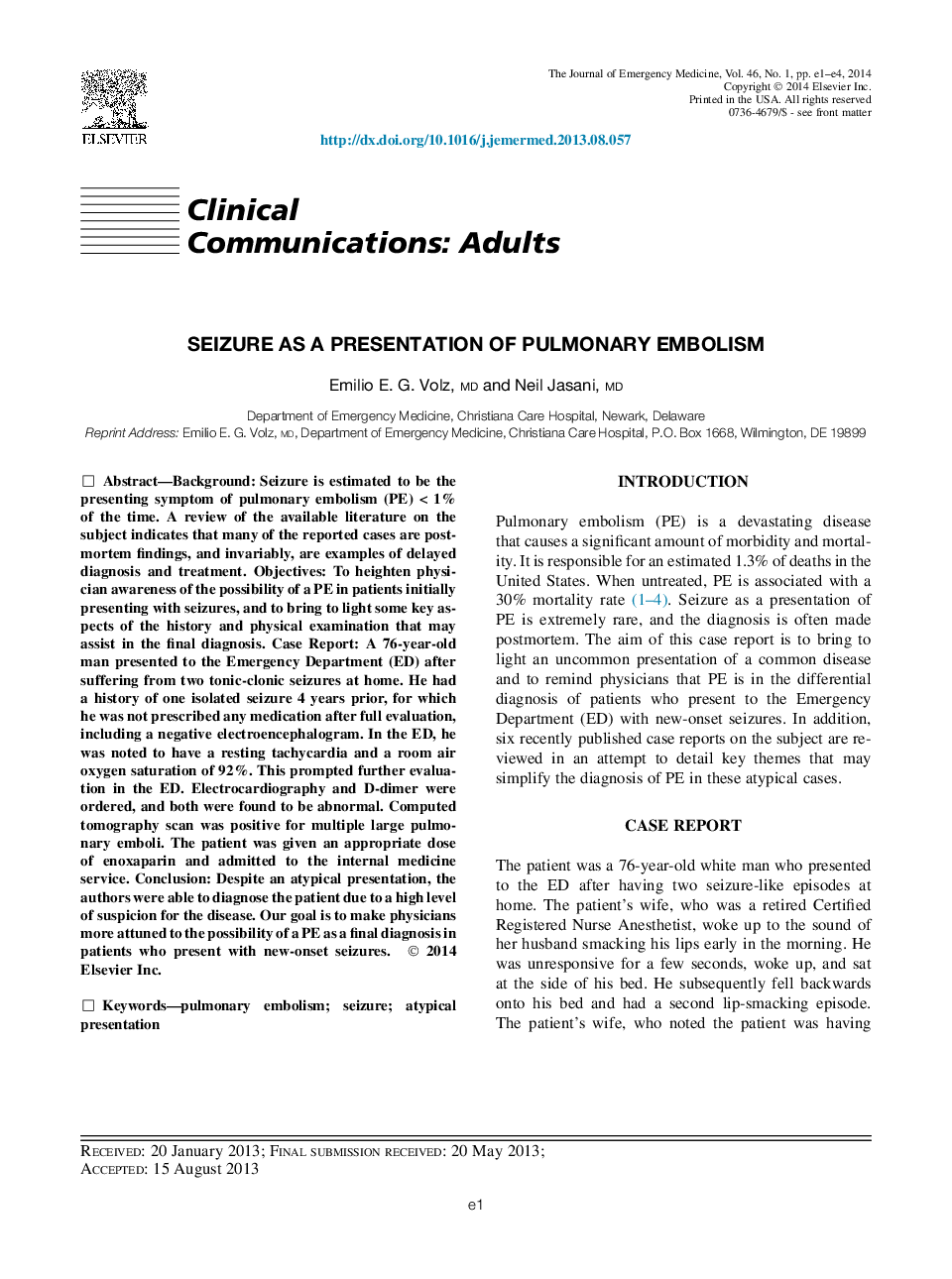| Article ID | Journal | Published Year | Pages | File Type |
|---|---|---|---|---|
| 3246645 | The Journal of Emergency Medicine | 2014 | 4 Pages |
BackgroundSeizure is estimated to be the presenting symptom of pulmonary embolism (PE) < 1% of the time. A review of the available literature on the subject indicates that many of the reported cases are postmortem findings, and invariably, are examples of delayed diagnosis and treatment.ObjectivesTo heighten physician awareness of the possibility of a PE in patients initially presenting with seizures, and to bring to light some key aspects of the history and physical examination that may assist in the final diagnosis.Case ReportA 76-year-old man presented to the Emergency Department (ED) after suffering from two tonic-clonic seizures at home. He had a history of one isolated seizure 4 years prior, for which he was not prescribed any medication after full evaluation, including a negative electroencephalogram. In the ED, he was noted to have a resting tachycardia and a room air oxygen saturation of 92%. This prompted further evaluation in the ED. Electrocardiography and D-dimer were ordered, and both were found to be abnormal. Computed tomography scan was positive for multiple large pulmonary emboli. The patient was given an appropriate dose of enoxaparin and admitted to the internal medicine service.ConclusionDespite an atypical presentation, the authors were able to diagnose the patient due to a high level of suspicion for the disease. Our goal is to make physicians more attuned to the possibility of a PE as a final diagnosis in patients who present with new-onset seizures.
